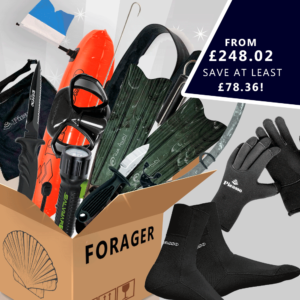If you’re new to foraging, we’d strongly recommend reading our intro to foraging article first. This gives a general overview of rules you should be aware of, basic gear you’ll need and safety tips.
On this page we’re looking at some of the bigger prey you can bag when you get into the water. We’ll look at different types of crabs, lobster, octopus and Kina. Note that the minimum size guides we quote are from our local Cornwall IFCA and other regions may have slight variations (see links in this article).
Crabs
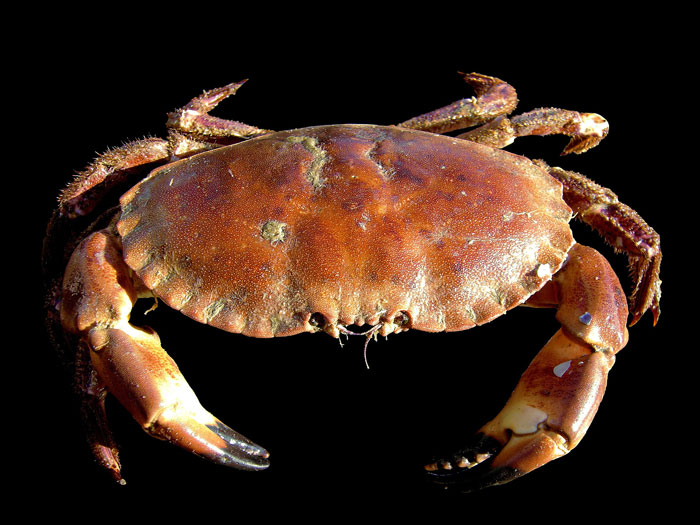
Crabs are incredibly versatile as a food – you can throw your crab meat into a salad, add it to noodles with some chili or blend it into crab pâté. For the true Viking experience crack the claws and eat the meat like a chicken drumstick! It’s a healthy choice, packed with protein, and with high levels of omega-3, B12 and selenium.
There are a few different types of crabs you’ll find. The brown crab, or ‘edible crab’ is probably what you’ll see most of, but you can eat shore crabs or the larger spider crabs.
Edible crabs live on the lower shore and out under the sea up to about 100 metres. On rocky shores, you’ll find them hiding in cracks, holes, and under rocks. They can grow up to 3kg and contain plenty of sweet delicious meat, but for the big ones, you’ll need to get into the water and hunt.
When hunting them you normally have one easy attempt while they are docile – after that they wake up and plan to make your life very difficult! Get your hook over its back and swiftly pull it out. Quickly grab its back two legs – this will keep you safe from its claws and get it in your foraging bag (catch bag) asap.
A word of warning: never attempt to put your hand over its back to pull it out. Even the small ones have immense power and can pin you hand to the roof of its hole. Not good if you’re underwater holding your breath – always use a tool for this guys.
Finally if your catch bag also has lobster in, your brown crab may well take chunks out of it, so you need to try and keep them separate.
To save your fingers from pesky claws, you might want to consider the Mac Gaff and the Picasso crab and lobster extractor.
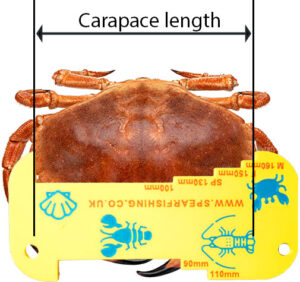
Edible crabs have a minimum carapace size – 160mm for male and 150mm for female. How do you tell the difference? The male has a narrow, triangular pointed abdomen, and this fits tightly to the underside of its body.
Spider crabs are a much bigger bounty and an easy catch. We run an annual spider crab competition so be sure to join UK Spearfishing Buddies on Facebook and tag your spider crab photos!
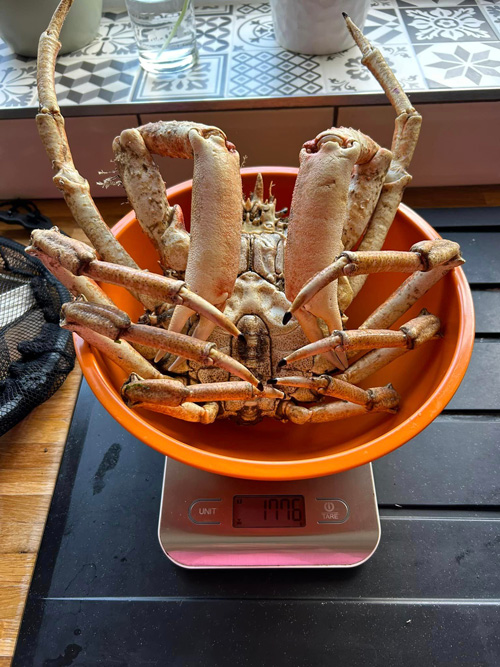
Above image: Richard Bond, UK Spearfishing Buddies
Spider crabs are probably the easiest and largest of all the shellfish. During the summer months they come into the shallows to breed – in fact, you can sometimes find piles of them all engaged in, well, you know… The males are the primary target here as they grow larger and also have much fatter claws where the bulk of their meat can found. By contrast, the females have very small claws making them not really worth the hassle of cooking and cleaning them.
They are extremely easy to catch. Often found walking out in the open or holding on to some kelp, they stick out like a sore thumb. Just grab them and turn them upside down on their backs, where they will instantly curl up and fall asleep.
With the size and ease of the spider crab, it’s not uncommon for people to get carried away. Try not to take advantage and only take what you are going to eat.
Cleaning these crabs can be a time consuming process. Be sure to watch a few videos on the best techniques to make the most of them. Cut those sockets open and get right in there with your pick. The meat is super sweet and ultra delicious – it also freezes well for those quieter months.
Under Cornwall IFCA rules (remember to check your own local rules if you’re not in Cornwall), spider crabs have a minimum carapace size of 130mm whether male or female. This is measured slightly differently to the edible crab:
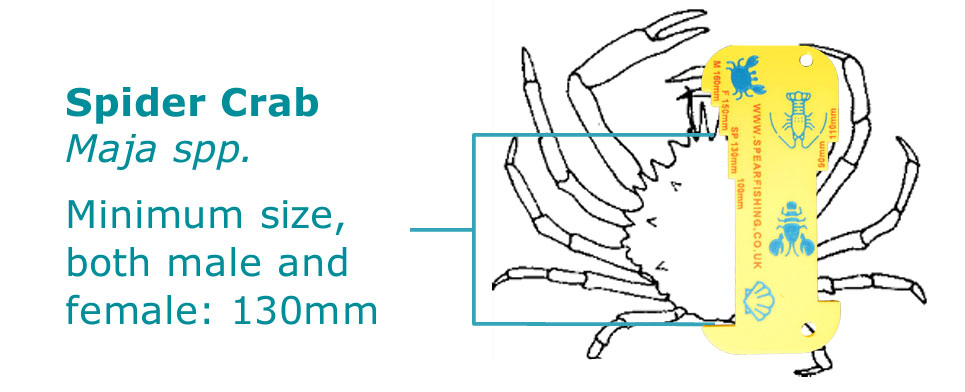
Lobsters
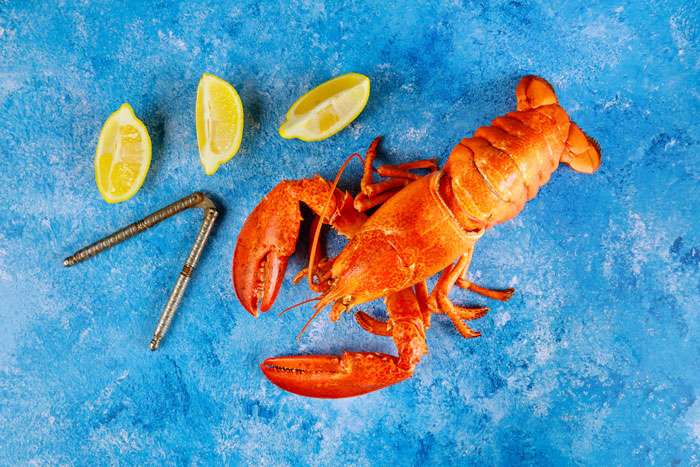
You can hunt for lobsters all year but the best months are arguably May to October. However while they may not have the numbers in the earlier months, their holes and caves are much more easier to find before all the kelp has grown back.
They are dark blue, only turning red once cooked.
Finding the lobster in the first place is often as hard as the extraction processes. You just need to spend time in the water diving a few meters, looking in all the holes, cracks and ledges. Often these will be covered by kelp so you really need to get amongst it all. A torch is pretty much essential here and you’re as likely to find a brown crab as you are a lobster.
Once found, quietly mark its location with the torch or your speargun and immediately return to the surface. Your best chance is your first chance, so take your time to breath up, lower that racing heart rate and maximise that breath hold.
The most popular technique is to get a hook or speargun spear flopper over its back, between some legs and quickly hook him out. Remember that they have 5 speeds and 4 of them are in reverse! You’ll need to get hands on him immediately. While the claws are powerful they are not the quickest so you have a bit of leeway. The aim is grab him on his back above the tail where your fingers are safe from the claws.
Other people like to ‘turn’ the lobster by going to its lair and tapping behind it with the hook. The curious lobster will turn around to see what’s behind him, giving you the opportunity grab him.
We have another little guide to catching lobsters here.
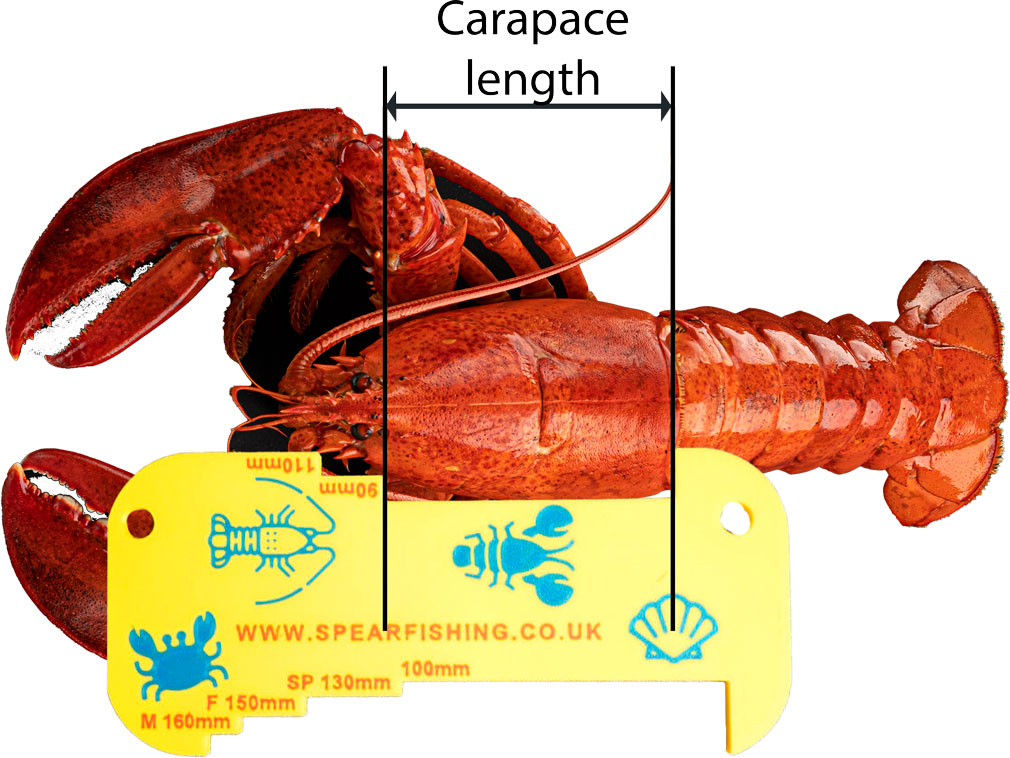
Lobsters are subject to minimum size rules and other rule too:
- Minimum 90mm Carapace – i.e. the upper section of the creature, measuring from its eye socket to its back.
- If you find a lobster that has a small ‘V’ cut into its tail flipper, you need to release her back into the ocean.
- You also have to return berried lobsters or crawfish to the water.
- You also can’t shoot lobsters – you have to catch them by hand.
Aim to grab the bug where the carapace meets the tail. It can’t get you there! Handy tools for catching lobsters without getting pinched are the Spearmaster lobster snare and the Spearmaster lobster crook.
Check out this BBC guide to cooking them.
Octopus

Octopus is another super healthy choice with 100 grams giving you around 29 grams of protein, together with a healthy dose of vitamins B6 and B12, iron and selenium.
IFCA rules say that you should only take octopus weighing a minimum of 750g but aim for bigger, for two reasons: first, sustainability, since it is unlikely a 750g octopus will be sexually mature and so, take too many babies and there won’t be any breeding in future. Secondly, octopus shrink by about 40% during cooking. A 1kg octopus will give you two decent servings.
You’ll find octopus hiding in holes and a torch is essential to get a good look at what’s in here. You’ll need a speargun or a gaff hook to take them out.
To dispatch an octopus quickly you can bite its eye off or bite it between the eyes. Or, if you’re able (it may be easier to take it back to shore), stab it between the eyes. Either way you pierce the nerve center and you’ll see a change in the Octopus’s skin colour.
Freezing the Octopus for at least 24 hours will soften its meat.
Cornish Kina
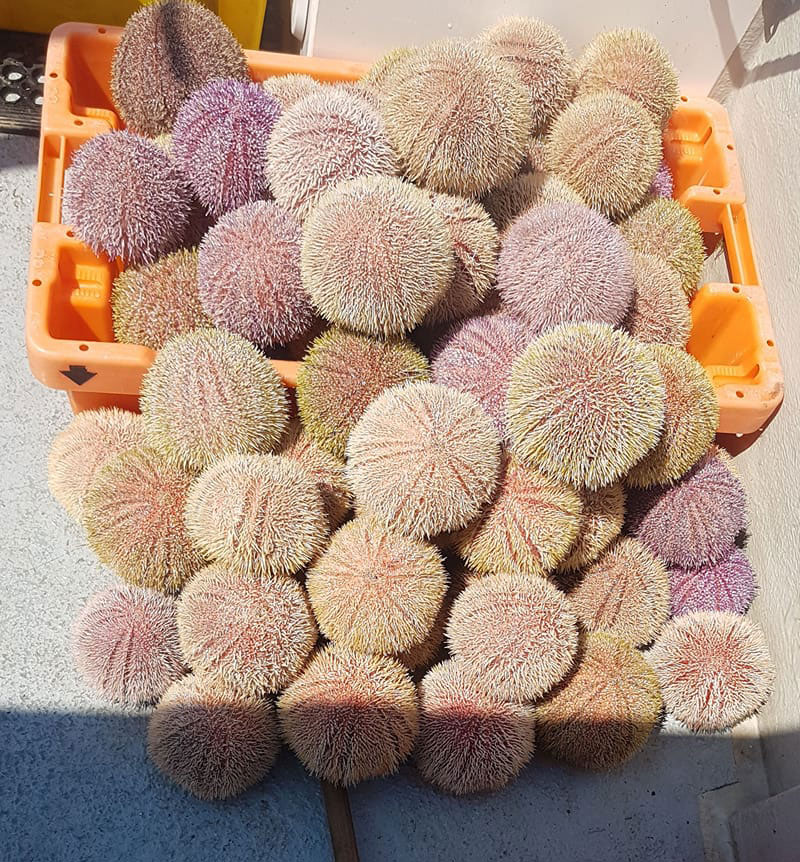
Above image: Peter Mills, UK Spearfishing Buddies
Although you can find sea urchins along the shore, you’ll only find the decent sized ones when you get into the water. These are known by their Māori name ‘Kina’ and they grow up to 15cm. You’ll find them on subtidal rocky reefs which are permanently underwater, where they graze on the algae covering the rocks.
These are a bit like marmite it seems, you love them or hate them. However, when you try them may influence your decision – they taste better when they are in season and the spring tends to bring them on. One UKSB contributor says that around then, “they taste like mango.” What do you think?
You should only eat these if you catch them alive, otherwise they will make you unwell. They are eaten raw. You crack these open with a knife all the way around, gently shake them enough to get rid of the guts and only eat the yellow/orange roe left behind. If it’s colourful and fat then it’s likely to taste good.
Some people eat it raw, straight out the shell – others put it on a plain biscuit or toast.
Read more about foraging along the coastline here.

